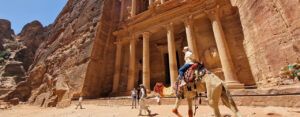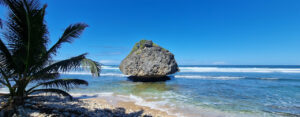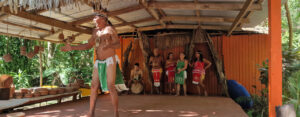
Nevis Say Nevis Again
Following the serenity of Sint Maarten, and the repose of Antigua, we arrived in a far more energetic Saint Kitts, one half of the Caribbean nation of Saint Kitts and Nevis. The first impression from outside the cruise terminal was a curious blend of Britishness in the tropics—red phone boxes, iron lampposts, and Georgian-era facades painted in sorbet colours. Basseterre, the island’s capital, is a small but lively place, with narrow streets winding past churches, squares, and colonial remnants that reflect a long and complex history. At the centre of it all stands the green-painted Berkeley Memorial Clock Tower, surrounded by a mix of duty-free shops and local businesses. With the heat clinging to us like a heavy, wet towel, even at the crack of dawn, we didn’t linger in the city for too long.
We took a short drive to Fairview Great House, an impeccably restored plantation estate. The house itself is furnished in the 18th-century style, with British antiques, mahogany four-poster beds, and polished floors. But the real draw is its unflinching look at the history of slavery on the island. In a dimly lit room beneath the house, the Fairview Slavery Exhibit presents a sobering account of the transatlantic slave trade. The original slave registry of St. Christopher is displayed alongside documents detailing the names, ages, and assigned value of enslaved Africans. Panels explain the forced journey across the Atlantic, the brutal conditions on plantations, and the enduring legacies of colonialism.
The contrast between the opulent house upstairs and the harsh history laid bare below was stark, and even more so when stepping outside into the beautiful garden. The grounds are neatly kept, with paved walkways, ornamental shrubs, and flowering plants. A small white gazebo sits at the edge of the lawn, overlooking a view of the Caribbean. Saint Kitts was Britain’s first colony in the region, settled in 1623, and quickly became a template for all plantation economies. It was sometimes referred to as the “Mother Colony” for this reason. By the late 17th century, it had become a major producer of sugar, which relied heavily on the labour of enslaved Africans. The fortunes generated by estates like Fairview came at enormous human cost, and that legacy is embedded in almost every site of historical interest on the island.
A short drive inland brought us to Romney Manor, another former estate now repurposed as a cultural site. This one is home to Caribelle Batik, a working batik studio that’s been operating since the 1970s. Inside a cheerful yellow-and-green building, local artisans demonstrate the batik process—drawing designs in hot wax and repeatedly dyeing fabric in bold, overlapping colours until it resembles something someone in a mid-life crisis might wear to a reggae festival in Devon. The finished works hang everywhere: bags, wall art, sarongs, all with palm trees, hummingbirds, and volcanic peaks. The gardens outside are just as colourful, filled with bougainvillaea, hibiscus, and a towering saman tree over 400 years old. It’s said to have stood here even before Thomas Jefferson’s great-great-grandfather once owned the estate, older even than the country where most of the tourists we were attempting to avoid were from.
In the afternoon, we made the winding drive up to Brimstone Hill Fortress National Park, a UNESCO World Heritage Site perched high on the island’s western coast. The fortress was built by the British in the 17th and 18th centuries and took over a century to complete. From the ramparts, the views are wide and uninterrupted—green hills tumbling down to the sea, with the neighbouring island of Sint Eustatius visible in the distance. Dozens of heavy cannons still point out toward the water, a reminder of the colonial arms race that once played out across these islands. The layout includes barracks, storage buildings, a well-preserved parade ground, and a small museum that provides context about the colonial conflicts and the people who built the site (and is mercifully air-conditioned).
Back in Basseterre, we wandered through Independence Square. Once a slave market, it’s now a public park shaded by large trees and crisscrossed with walkways. A small fountain sits in the middle, doing its best despite a lack of water, where local egrets now congregate. A sign at the entrance explains how the square was renamed in 1983 when Saint Kitts and Nevis gained independence from Britain. We ended the day by the sea, at Port Zante, where souvenir stalls, restaurants, and sunburned people bartering for knock-off watches now fill what was once a stretch of disused warehouses. We watched cruise passengers trickle back aboard, past signs promising cold Carib lagers and duty-free diamonds. We took up an offer of the first and watched the sun begin to set behind a nearby hill before hopping back on deck at the last moment. On to Dominica…






















